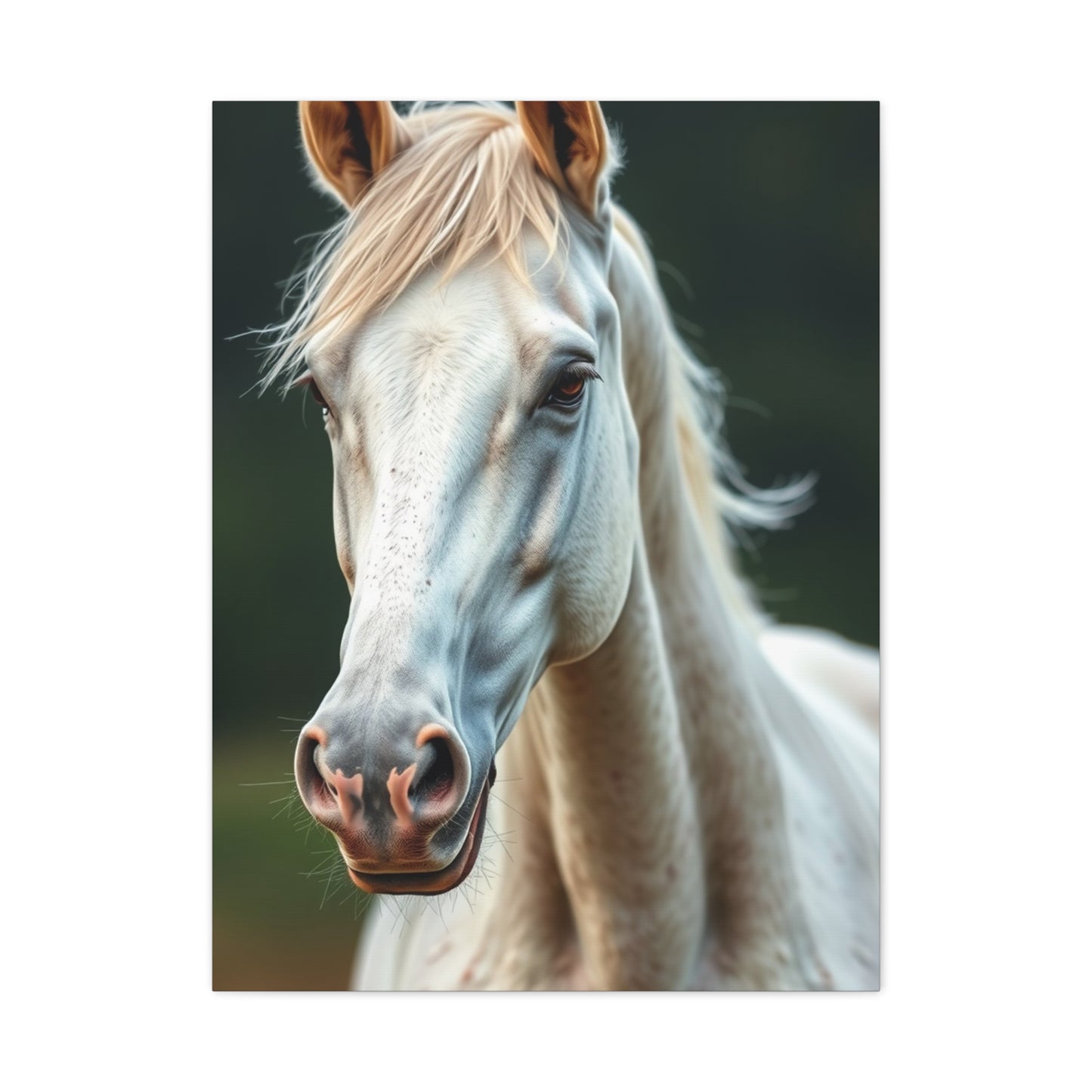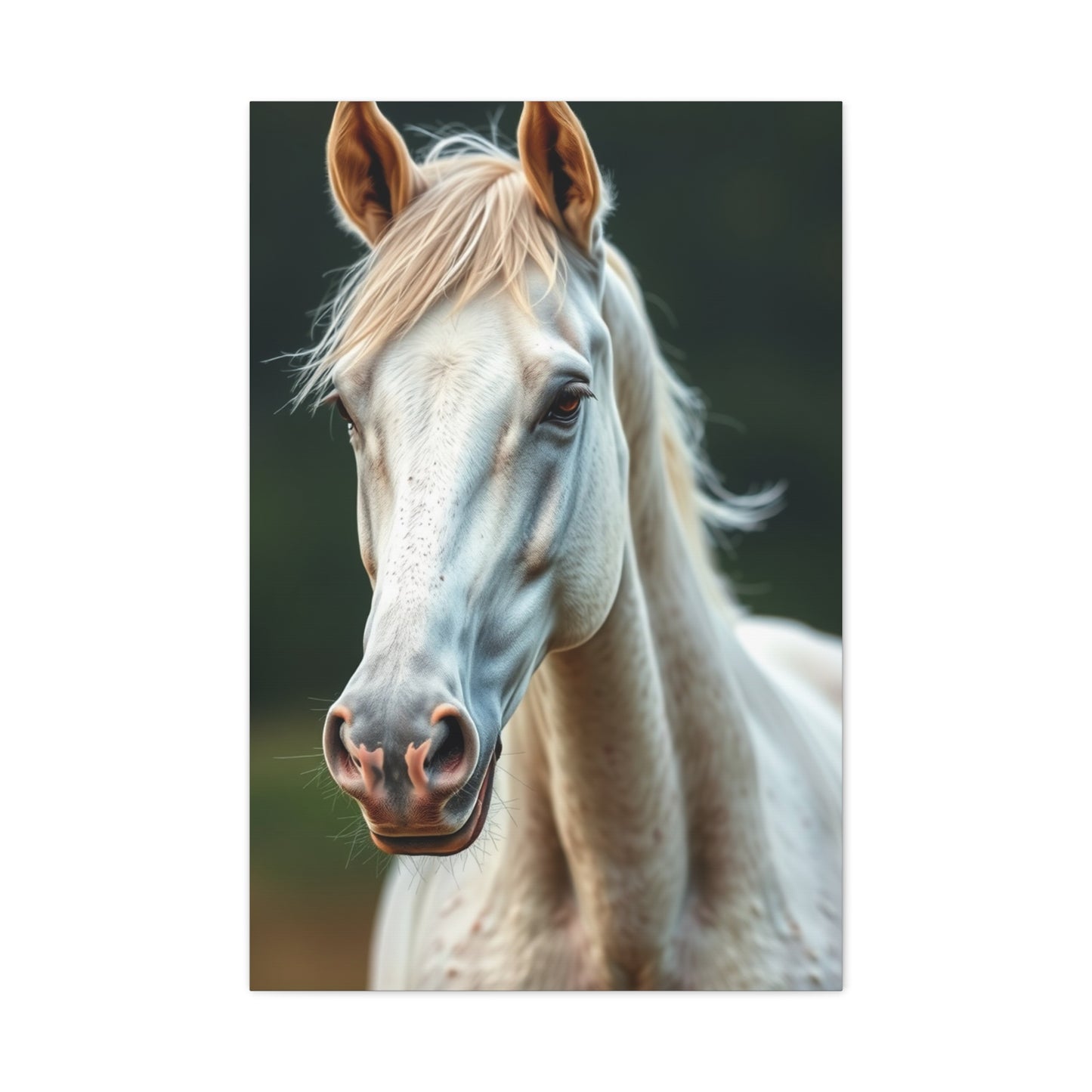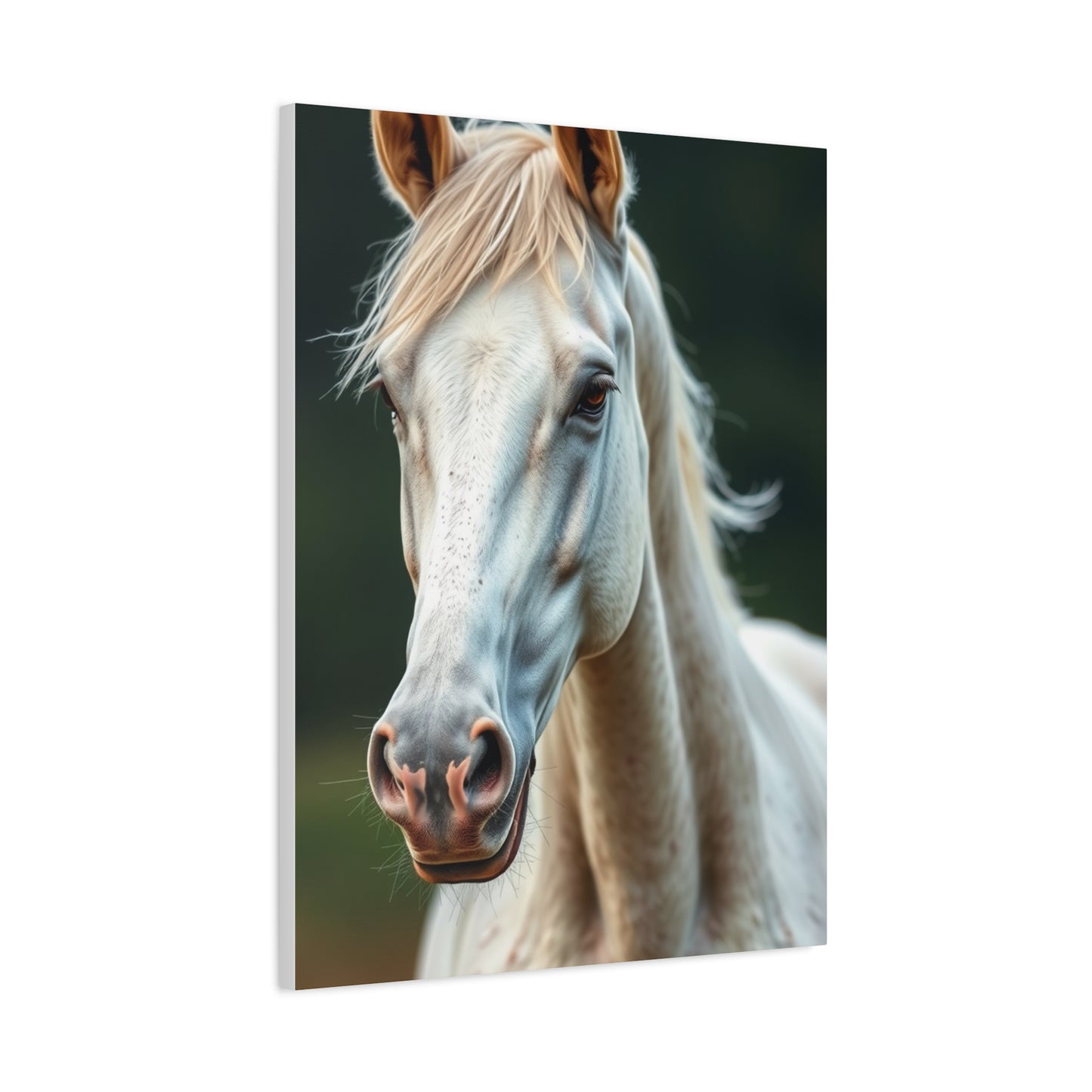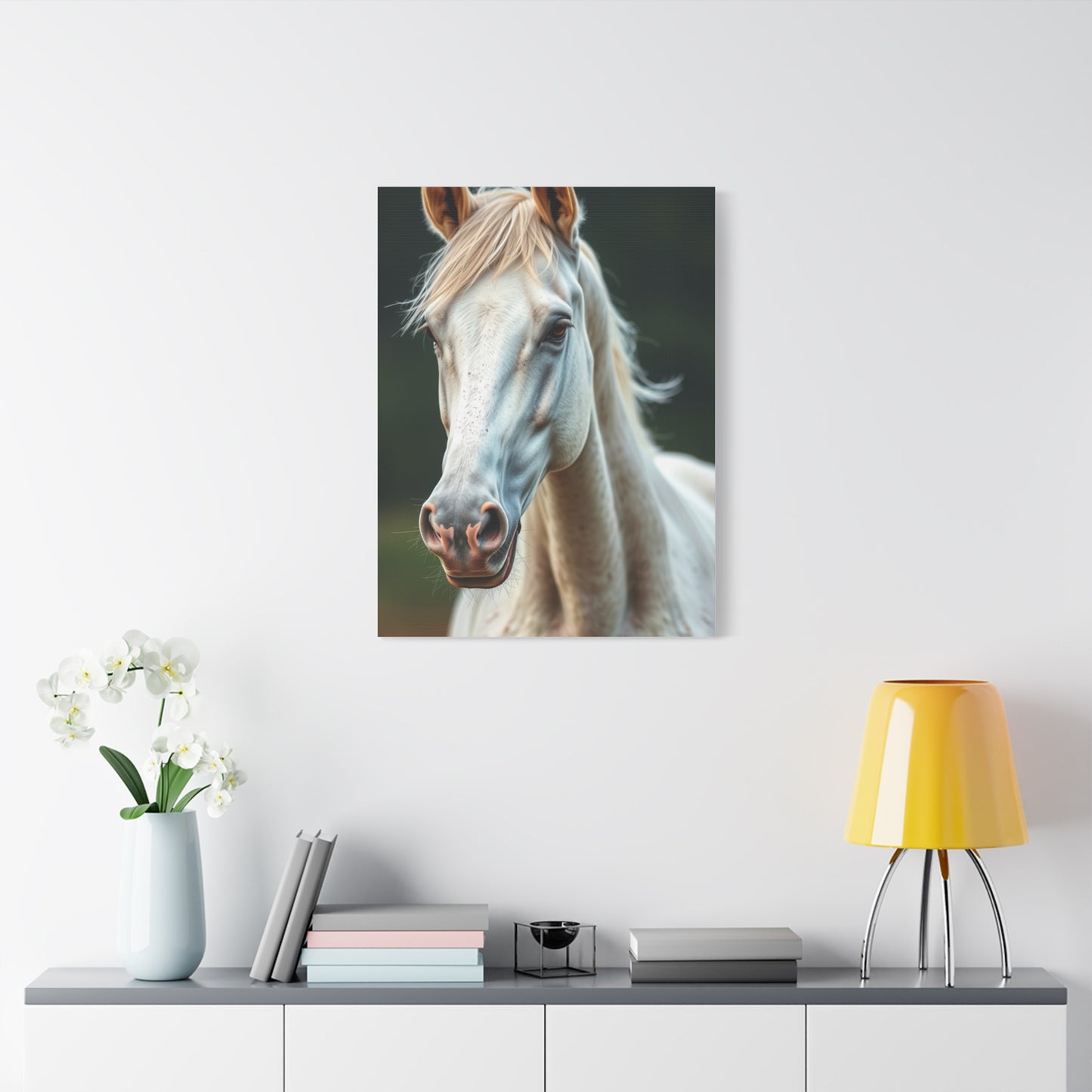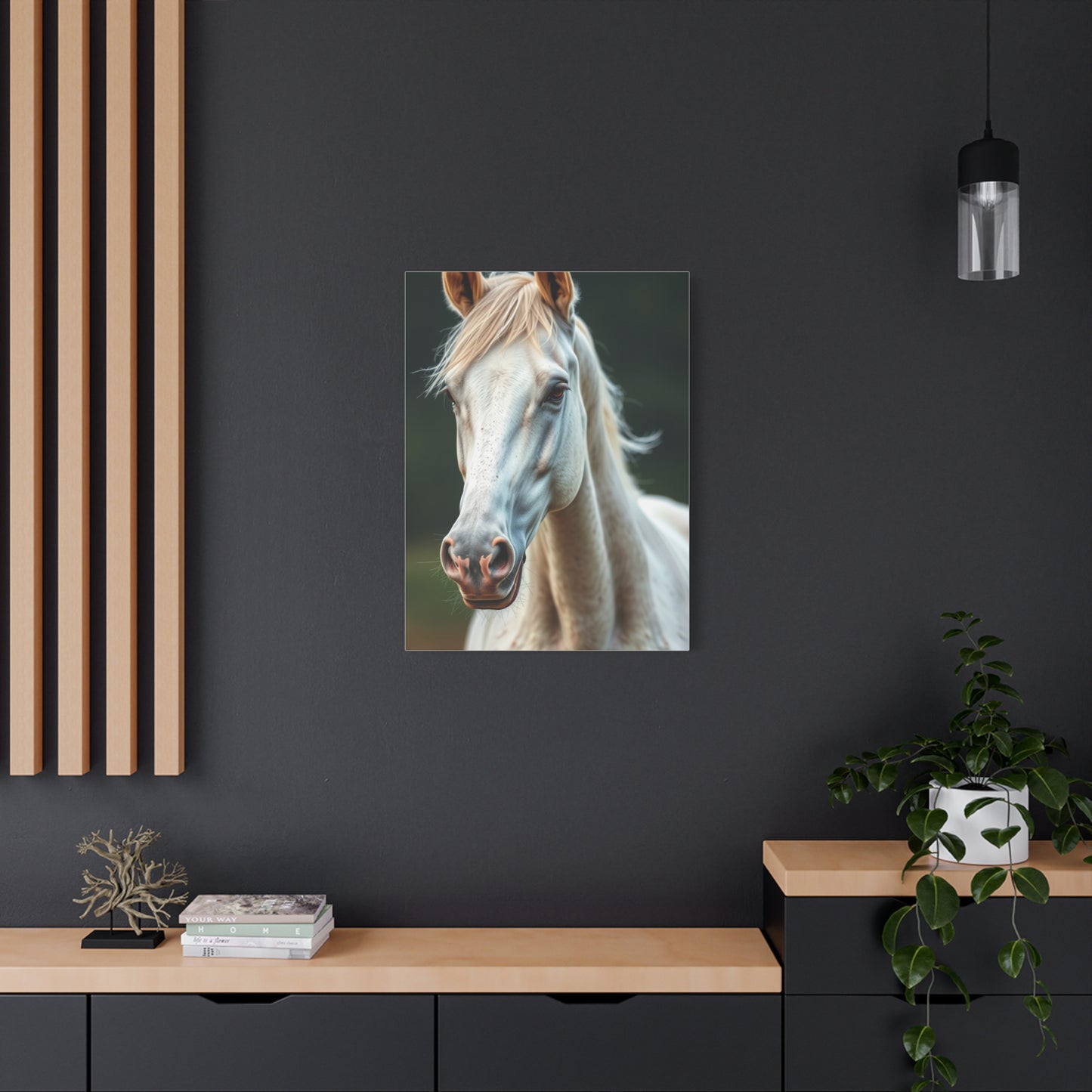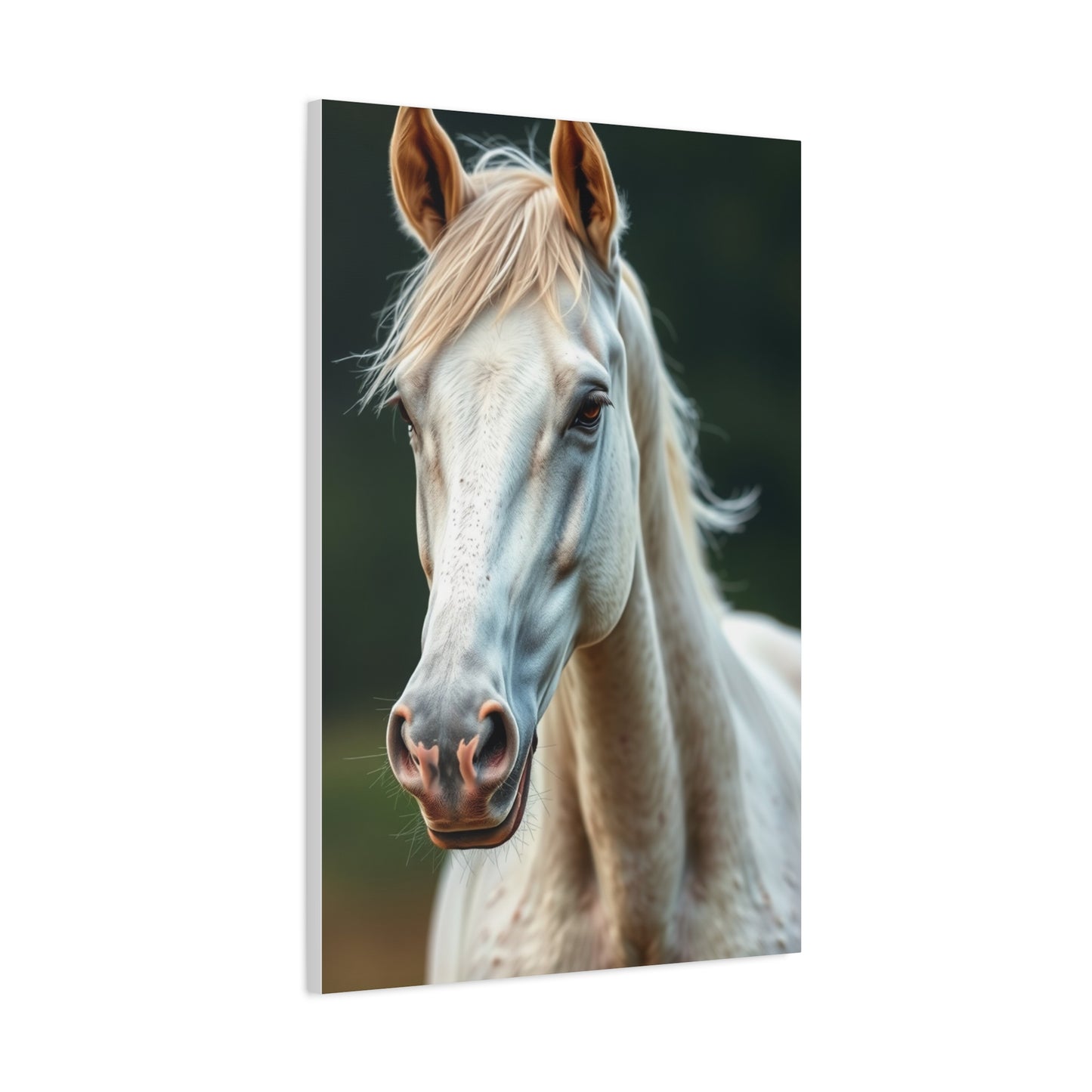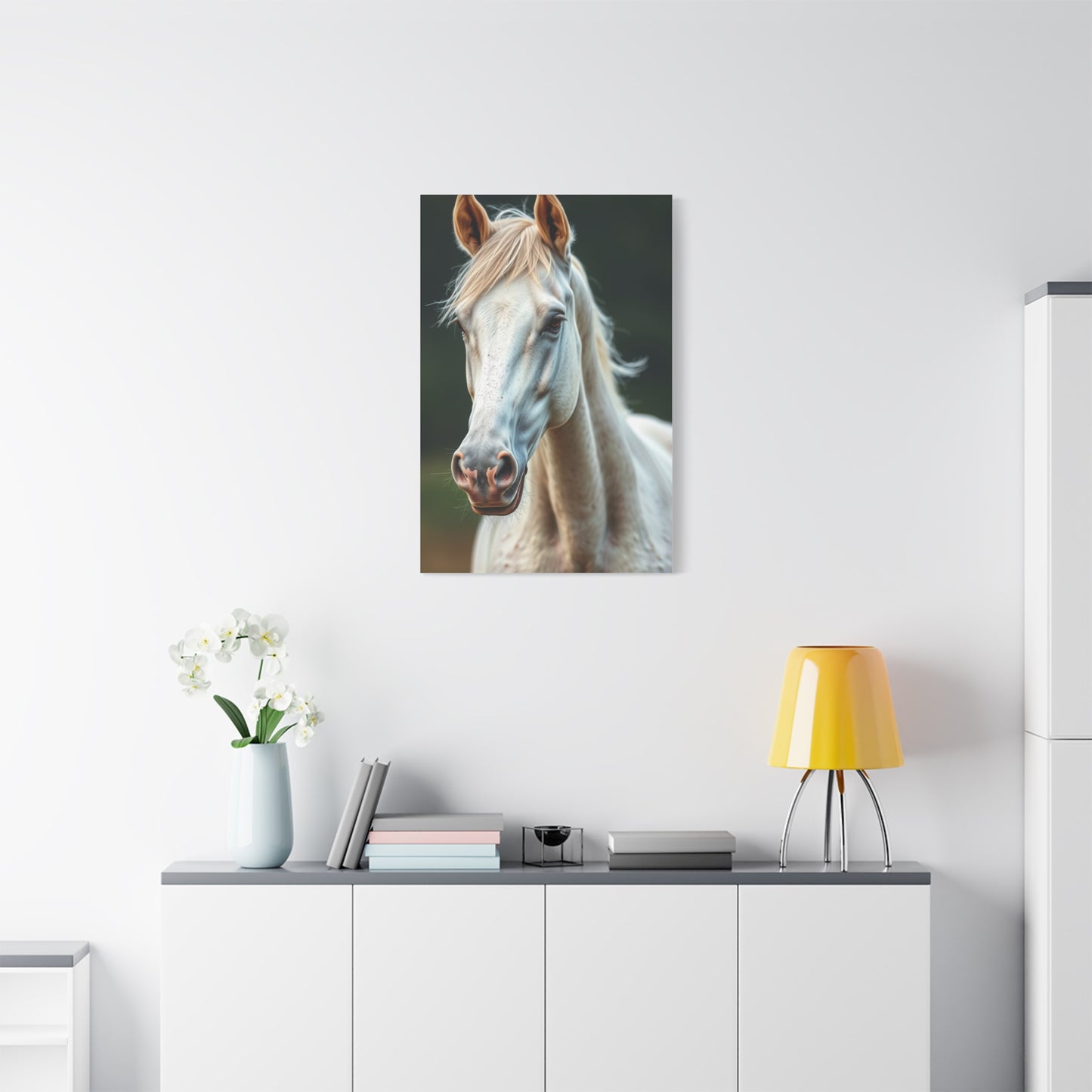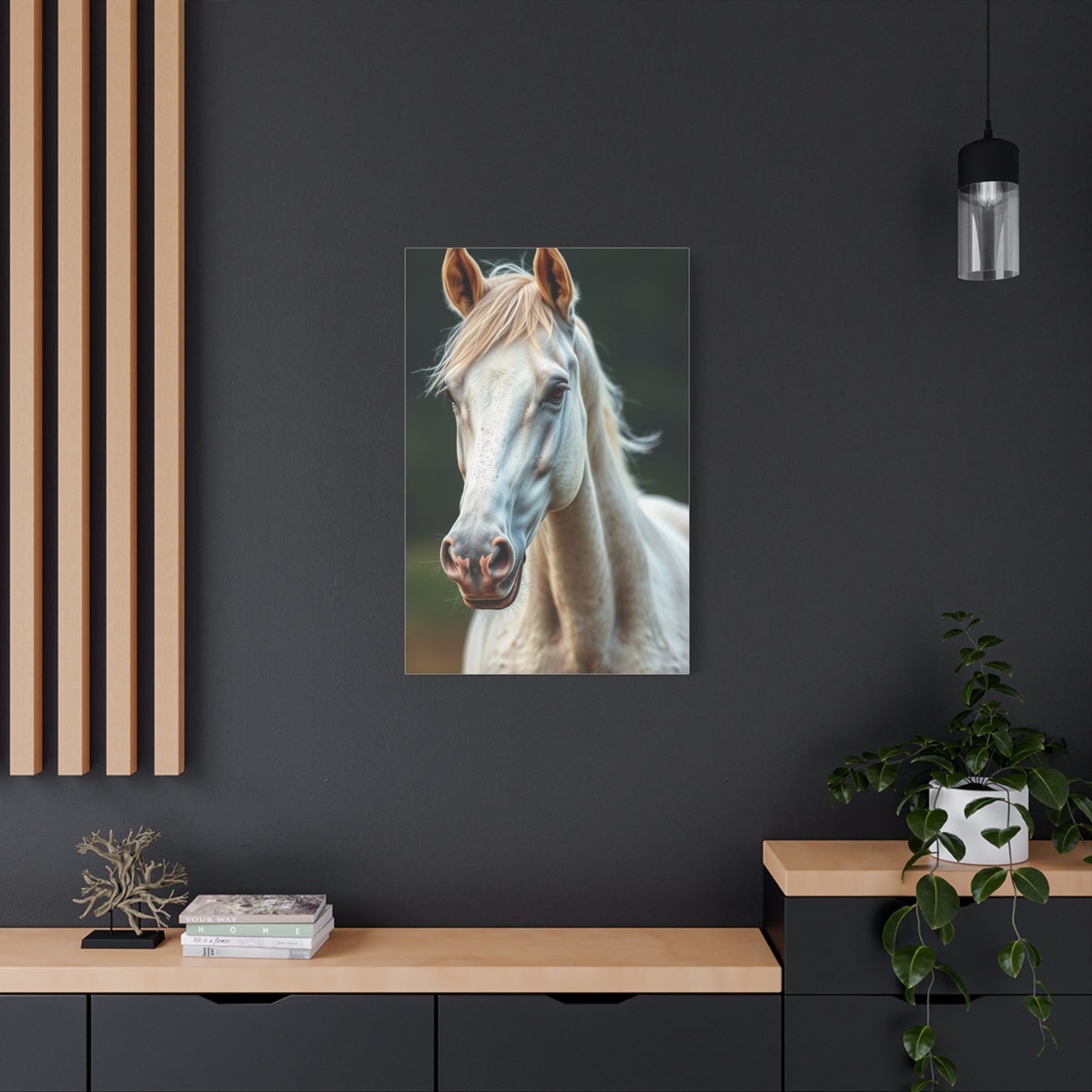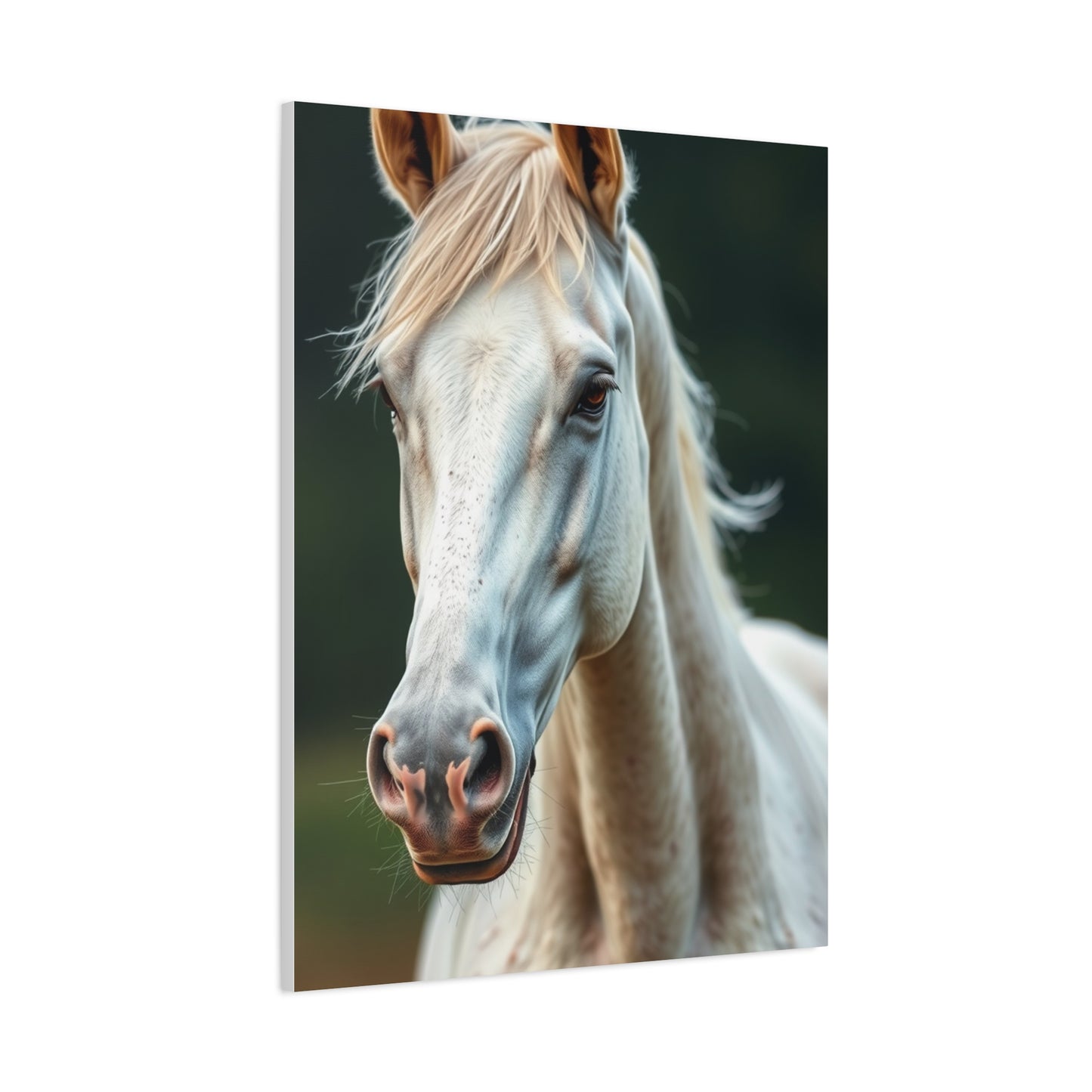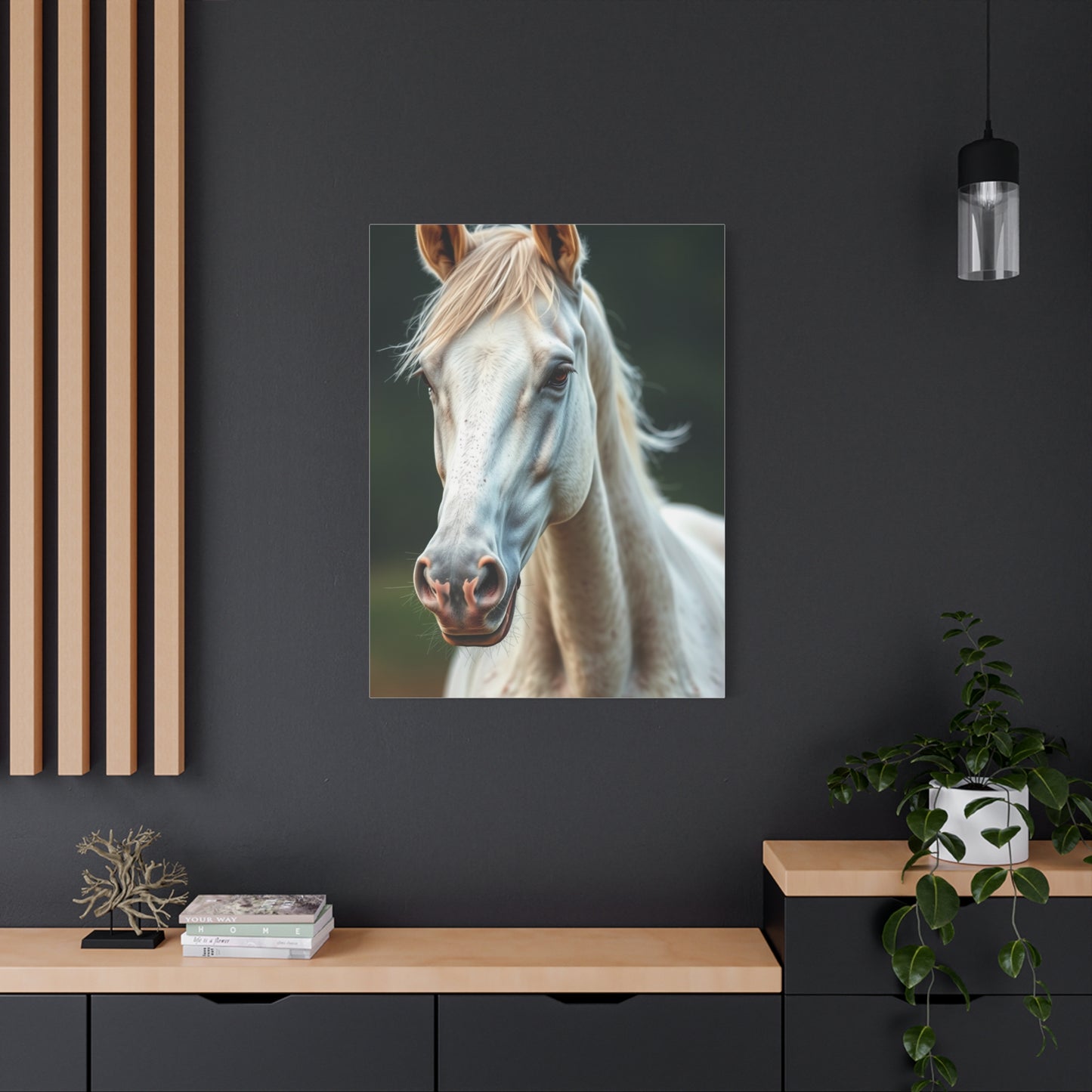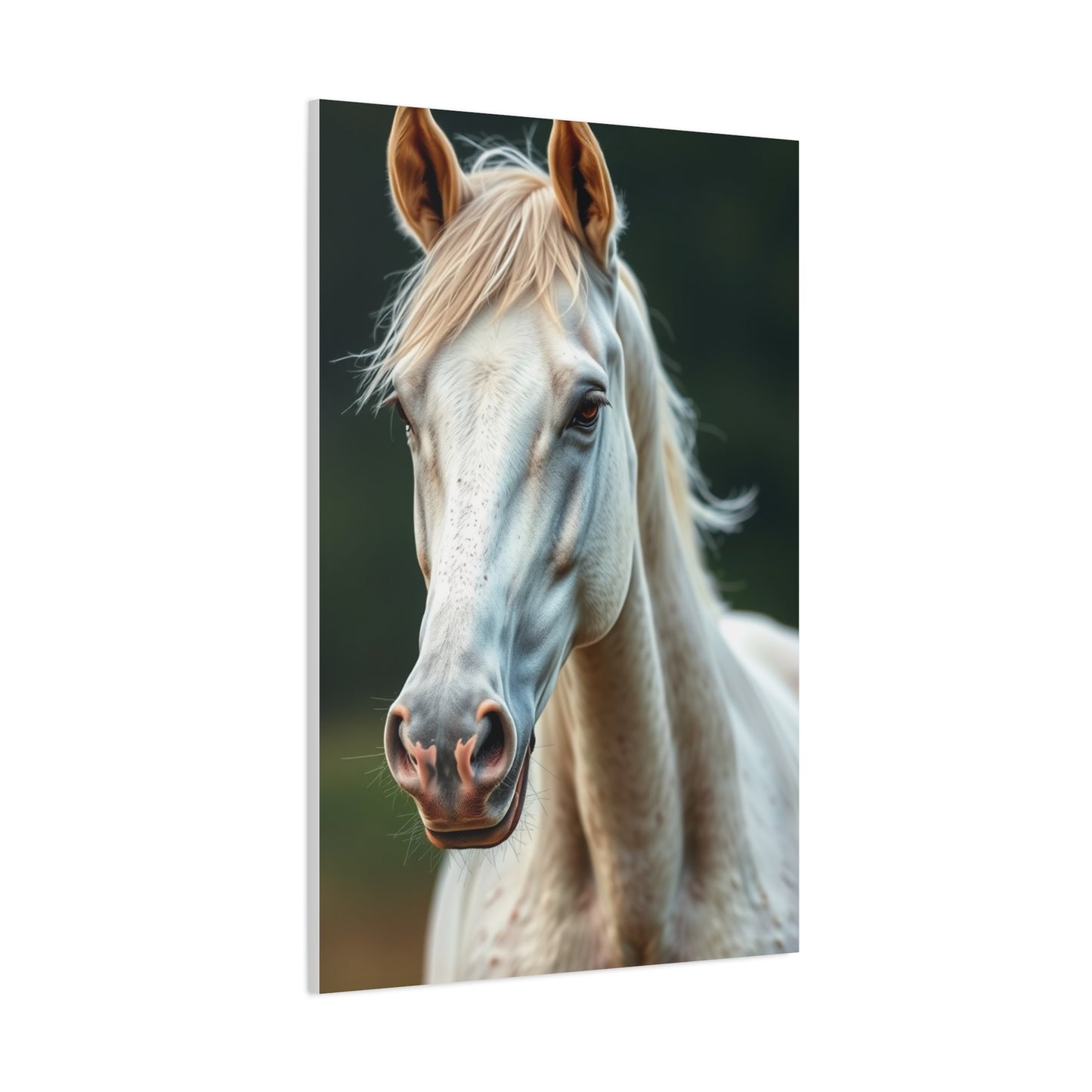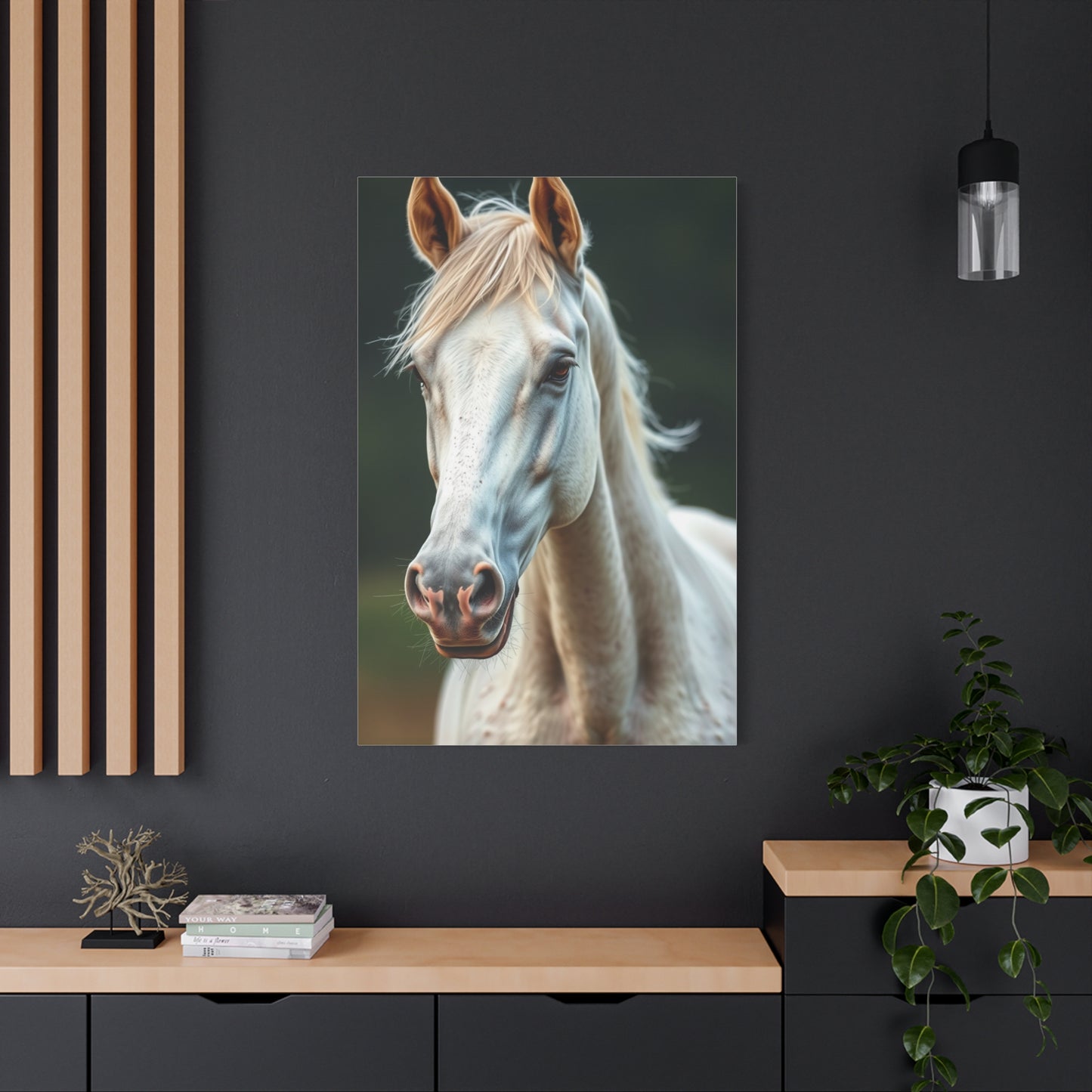The Equestrian Elegance: Why Aristocratic Equus Artistry Wall Art Elevates Your Space
The allure of equine imagery has captivated humanity for centuries, representing power, grace, freedom, and nobility. In contemporary interior design, horse-themed canvas wall art has emerged as a sophisticated choice for those seeking to infuse their living spaces with elegance and character. These artistic representations transcend mere decoration, serving as focal points that communicate refined taste and appreciation for natural beauty. Whether you're drawn to the muscular magnificence of stallions, the gentle nobility of mares, or the dynamic energy of horses in motion, equine canvas art offers endless possibilities for enhancing your home or office environment.
The resurgence of interest in horse-themed artwork reflects a broader cultural appreciation for nature-inspired design elements. As urban dwellers increasingly seek connections to the natural world, these powerful animal portraits provide a bridge between contemporary living spaces and the untamed beauty of the equestrian realm. From minimalist representations to elaborate classical compositions, equine canvas prints accommodate diverse aesthetic preferences while maintaining their timeless appeal.
Aristocratic Equus Artistry Canvas Wall Art
Aristocratic equus artistry represents the pinnacle of equine portraiture, combining centuries-old painting traditions with modern printing technology to create stunning visual statements. These pieces draw inspiration from the grand equestrian portraits that once adorned the walls of European estates and manor houses, where horses symbolized wealth, status, and aristocratic heritage. The artistic approach emphasizes the noble bearing of these magnificent creatures, capturing their inherent dignity through careful attention to anatomical accuracy, lighting, and compositional balance.
The creation of aristocratic equus artistry involves meticulous study of horse breeds, their distinctive characteristics, and the subtle variations that distinguish one animal from another. Artists specializing in this genre often spend years mastering the technical skills required to accurately render the complex musculature, the sheen of a well-groomed coat, and the expressive intelligence visible in equine eyes. The resulting canvas prints showcase horses in dignified poses that emphasize their statuesque qualities, often incorporating classical elements such as ornate bridles, elegant backgrounds, or references to historical settings.
When selecting aristocratic equus artistry for your space, consider how the formality and refinement of these pieces will complement your existing décor. These works pair exceptionally well with traditional furniture, rich wood tones, leather upholstery, and spaces featuring architectural details such as crown molding or wainscoting. The color palettes typically employed in aristocratic equine art—deep browns, rich blacks, warm chestnuts, and creamy whites—create visual harmony with classic interior design schemes while providing sufficient contrast to command attention.
The technical execution of these canvas prints deserves special attention, as quality reproduction methods ensure that every detail of the original artwork translates effectively to the canvas medium. Advanced giclée printing techniques utilize archival-quality inks that resist fading, maintaining color vibrancy for decades. The canvas material itself, typically composed of high-grade cotton or polyester blends, provides an ideal surface that mimics the texture and appearance of traditional oil paintings, lending authenticity and depth to the reproduction.
Placement strategies for aristocratic equus artistry should capitalize on the formal nature of these pieces. Entry halls and foyers benefit tremendously from these commanding images, setting an elegant tone for your entire home. Libraries and studies provide ideal settings where the intellectual associations of equestrian culture complement spaces dedicated to learning and contemplation. Dining rooms also serve as excellent locations, where the refined nature of these artworks enhances the formal atmosphere appropriate for entertaining guests.
The versatility of aristocratic equus artistry extends beyond private residences into commercial and professional settings. Law offices, financial institutions, and corporate headquarters frequently incorporate these dignified images to project stability, tradition, and trustworthiness. Equestrian facilities, from riding schools to breeding operations, naturally benefit from high-quality horse portraiture that celebrates the animals at the center of their enterprise. Interior designers increasingly recommend these pieces for hospitality venues seeking to create distinctive, memorable atmospheres that differentiate them from generic chain establishments.
Regal Horse Canvas Wall Décor
Regal horse canvas wall décor embodies the sovereign magnificence of these extraordinary animals, presenting them as the monarchs of the animal kingdom they truly are. This category of equine art emphasizes the commanding presence and natural authority that horses exude, capturing moments when their power and beauty align in perfect harmony. The term regal aptly describes both the subject matter and the emotional response these artworks evoke—a sense of awe and respect for creatures that have partnered with humanity throughout civilization's development.
The artistic interpretation of regal themes in equine canvas décor often incorporates elements that enhance the majestic qualities of the subjects. Rich, jewel-toned backgrounds—deep burgundies, royal purples, emerald greens, and sapphire blues—create dramatic contrasts that make horses appear to glow with inner light. Some compositions feature subtle crown motifs, ornamental patterns, or architectural elements suggestive of palace settings, reinforcing the royal associations without overwhelming the primary focus on the animal itself.
Breed selection significantly influences the regal character of equine canvas décor. Certain breeds naturally embody aristocratic qualities through their physical characteristics and historical associations. Andalusians, with their arched necks and elevated gaits, descend from Spanish royal bloodlines and appear born to ceremonial roles. Lipizzaners, famous for their performances at the Spanish Riding School in Vienna, represent centuries of selective breeding for beauty, intelligence, and trainability. Friesians, with their flowing manes, feathered legs, and glossy black coats, possess an almost mythical appearance that commands attention in any setting.
The emotional resonance of regal horse canvas wall décor extends beyond mere aesthetic appreciation to tap into deeper psychological associations. Horses represent freedom, yet these images show animals comfortable with their power, neither wild nor subjugated but rather embodying a collaborative relationship with humanity. This duality makes them particularly meaningful in spaces where strength and grace must coexist—executive offices, negotiation rooms, or personal spaces where individuals cultivate their leadership qualities.
Compositional techniques employed in regal horse canvas décor often draw from classical portraiture traditions adapted for equine subjects. Three-quarter views showcase both the profile and frontal aspects of the horse, providing comprehensive perspective on their conformation while creating dynamic visual interest. Dramatic lighting, often suggesting the golden hour or theatrical spotlighting, sculpts form and highlights texture. Some pieces incorporate architectural elements such as columns, arches, or balustrades that frame the subject and reinforce civilized, cultured associations.
Noble Steed Portrait Canvas Prints
Noble steed portrait canvas prints represent a specialized category within equine art that focuses on individual character rather than generic breed representations. These portraits capture the unique personality, spirit, and distinctive features of particular horses, treating them as portrait subjects worthy of the same respect and artistic attention traditionally reserved for human subjects. The term steed itself carries connotations of worthiness, courage, and service, elevating these animals beyond mere livestock to recognized individuals with inherent dignity.
The artistic approach to noble steed portraits differs significantly from more generic equine imagery. Artists invest time in understanding their subjects, observing behavioral patterns, identifying signature expressions, and noting the subtle physical characteristics that distinguish one animal from another. A small white blaze, an irregular star marking, the particular arch of a neck, or the unique set of the ears all contribute to creating recognizable portraits rather than idealized types. This attention to individuality resonates with viewers, even those unfamiliar with the specific horse depicted, as it communicates respect for the subject's unique existence.
Historical precedent for noble steed portraiture extends back centuries, with famous examples including George Stubbs' portraits of racehorses like Whistlejacket and Hambletonian, works that treated their equine subjects with the same seriousness and technical mastery applied to portraits of aristocrats. These historical examples established conventions that contemporary artists continue to reference, including neutral or minimal backgrounds that focus attention entirely on the subject, careful rendering of musculature and coat texture, and compositions that showcase the horse's best attributes while maintaining anatomical accuracy.
The emotional connection between horses and their human companions makes noble steed portraits particularly meaningful for equestrians who wish to commemorate beloved animals. Canvas prints of cherished horses serve as lasting tributes, preserving memories of the bonds formed through years of partnership. These personalized artworks hold sentimental value that transcends their decorative function, representing relationships characterized by mutual trust, understanding, and affection. Many horse owners commission or purchase such portraits as celebrations of living animals or memorials to those who have passed, creating heirlooms that future generations can appreciate.
Technical considerations in creating noble steed portrait canvas prints involve careful attention to lighting, background selection, and compositional framing. Natural lighting often produces the most flattering results, revealing the subtle variations in coat color and the lustrous quality of healthy hair. Studio lighting offers greater control but requires expertise to avoid harsh shadows or unnatural highlights that distract from the subject's natural beauty. Background choices range from simple solid colors that emphasize the horse to more elaborate settings that provide context about the animal's environment or discipline.
Elegant Equine Wall Art Masterpiece
Elegant equine wall art masterpieces represent the zenith of horse-themed artistic expression, where technical virtuosity combines with aesthetic sophistication to create works that transcend decoration and approach fine art status. The designation masterpiece suggests exceptional quality, originality, and impact—attributes that elevate these pieces beyond ordinary wall décor into the realm of significant artistic achievement. These works demonstrate mastery of composition, color theory, technical execution, and the ability to capture the ineffable essence that makes horses such compelling subjects.
The concept of elegance in equine art manifests through refinement of line, grace of form, and restraint in execution. Rather than overwhelming viewers with excessive detail or dramatic effects, elegant approaches showcase the inherent beauty of horses through balanced compositions that guide the eye smoothly through the artwork. Fluid lines echo the natural curves of equine anatomy—the arch of the neck, the sweep of the shoulder, the rounded quarters. Color applications demonstrate sophistication, with nuanced palettes that suggest rather than shout, creating atmospheric effects that enhance rather than dominate the subject.
Masterpiece-level equine wall art often exhibits distinctive artistic voices that set it apart from more generic commercial offerings. Established artists bring unique perspectives, techniques, and interpretations that make their work immediately recognizable. Some emphasize impressionistic approaches that capture the essence of horses through suggested forms and expressive brushwork. Others pursue hyperrealistic precision that celebrates every hair, every reflection, every subtle gradation of tone. Abstract interpretations distill equine forms to their essential geometric components, creating modernist compositions that reference their subjects while exploring formal artistic concerns.
The role of medium and technique in creating elegant equine masterpieces extends beyond simple reproduction to encompass the entire creative process. Original works might employ traditional oil painting, with its rich colors and textural possibilities, or watercolor, which lends itself to luminous, atmospheric effects. Pastel drawings capture the soft, velvety quality of horse coats while allowing precise control over detail. Mixed media approaches combine multiple techniques to create layered, complex works that reward extended viewing. When reproduced as canvas prints, these various original mediums each present unique challenges and opportunities for faithful representation.
Classic Horse Canvas Wall Décor
Classic horse canvas wall décor embodies timeless design principles that remain relevant across changing trends and evolving aesthetic preferences. The term classic suggests enduring appeal grounded in traditional artistic values—balance, proportion, harmony, and respect for subject matter. These pieces draw inspiration from established equestrian art traditions while adapting presentation formats to contemporary display preferences. Classic approaches avoid extremes of stylization, instead pursuing faithful representation that honors the nobility and beauty inherent in horses themselves.
The artistic heritage informing classic horse canvas wall décor spans centuries and cultures, from ancient Greek sculptures celebrating equine perfection to Renaissance paintings incorporating horses as symbols of power and virtue. European sporting art traditions, particularly British hunting scenes and French military paintings, contributed significantly to classic equine imagery conventions. American Western art introduced frontier themes featuring working horses, wild mustangs, and cowboy culture. Asian artistic traditions offered different perspectives, with Chinese scroll paintings and Japanese woodblock prints presenting horses through distinct cultural lenses. Contemporary classic horse décor synthesizes these diverse influences into cohesive artistic statements accessible to modern audiences.
Subject matter in classic horse canvas wall décor typically emphasizes traditional equestrian activities and settings. Hunting scenes depict riders in formal attire following hounds across countryside landscapes, capturing the pageantry and excitement of this controversial but historically significant sport. Racing images showcase thoroughbreds at full gallop, celebrating the speed, courage, and competitive spirit that have made horse racing the sport of kings. Working horses appear in agricultural contexts, pulling plows or carts, honoring their historical contributions to human civilization. Wild horses running free across open plains represent untamed nature and the frontier spirit. Each subject category carries distinct associations and appeals to different audience segments.
Color palettes in classic horse canvas wall décor tend toward natural, earthy tones that complement traditional interior design schemes. Rich browns ranging from chocolate to chestnut reflect common horse colorations while providing warmth and depth. Deep greens reference pastoral settings and natural environments. Creams and tans suggest aged parchment and historical documentation. Strategic accent colors—burgundies, navy blues, forest greens—add visual interest without overwhelming compositions. These conservative color choices ensure compatibility with existing décor while avoiding the risk of appearing dated as trends evolve.
Royal Equus-Inspired Canvas Wall Prints
Royal equus-inspired canvas wall prints celebrate the longstanding association between horses and nobility, drawing explicit connections to monarchical tradition, aristocratic culture, and the pageantry of royal courts. The royal designation references both the elevated status horses have held throughout history and the majestic qualities that make them fitting symbols for sovereign power. These prints often incorporate crown imagery, heraldic elements, regal color schemes, and compositional references to official state portraits, creating artwork that communicates luxury, heritage, and distinction.
Historical context provides rich foundation for understanding royal equus-inspired artwork. European monarchies maintained extensive breeding programs developing distinctive horse breeds associated with particular royal houses. The Lipizzaner horses of the Habsburg Empire, the Andalusian horses favored by Spanish royalty, and the thoroughbreds patronized by British monarchs all carry royal pedigrees and associations. State occasions, coronations, military ceremonies, and royal processions routinely featured elaborately caparisoned horses that displayed the wealth and power of ruling houses. Artists commissioned to document these events created paintings that continue to influence contemporary royal equus-inspired designs.
Iconographic elements distinguish royal equus-inspired canvas prints from more generic equine artwork. Crown motifs, whether subtle background details or prominent compositional elements, immediately communicate royal associations. Heraldic symbols including lions, eagles, fleur-de-lis, and coat of arms designs connect horses to specific royal lineages or national traditions. Rich textiles—velvet saddle blankets, gold-embroidered bridles, jeweled decorations—reference the elaborate tack used in ceremonial contexts. Architectural backgrounds featuring palace interiors or formal gardens situate horses within royal environments.
Color psychology plays crucial roles in royal equus-inspired canvas wall prints, with specific hues carrying cultural associations with monarchy and nobility. Royal purple, historically expensive due to its derivation from rare mollusks, signifies imperial power and exclusivity. Gold represents wealth, divine favor, and the sun's life-giving energy. Deep reds reference cardinal and royal authority. Rich blues, particularly cobalt and sapphire shades, evoke royal robes and heraldic traditions. These colors appear in backgrounds, decorative elements, or subtle glazes that enhance the regal atmosphere without overwhelming the equine subjects.
Aristocratic Horse Portrait Wall Art
Aristocratic horse portrait wall art represents a refined category emphasizing dignified representation of horses as subjects worthy of serious artistic attention. The aristocratic designation refers both to the social contexts these artworks reference and the elevated treatment given to equine subjects, approaching them with the same respect traditionally accorded to human nobility. These portraits emphasize individual character, refined beauty, and the inherent nobility that well-bred horses embody, creating artwork that transcends simple animal depiction to achieve genuine portraiture status.
The artistic tradition of aristocratic horse portraiture developed alongside human portrait painting, with many master artists applying their skills to equine subjects at the request of wealthy patrons. George Stubbs stands as the preeminent historical practitioner, producing meticulous studies that combined scientific accuracy with aesthetic beauty. His anatomical investigations, including the dissection and study of horses to understand their structure completely, enabled unprecedented realism in his paintings. Contemporary aristocratic horse portraits honor this tradition while incorporating modern sensibilities and technical capabilities.
Compositional principles in aristocratic horse portrait wall art emphasize clarity, dignity, and focus on the subject itself. Simple backgrounds, often neutral tones or subtle landscape suggestions, ensure that attention remains on the horse rather than distracting environmental details. Lighting typically suggests natural illumination, often the soft, directional light of morning or late afternoon that sculpts form without creating harsh contrasts. Poses tend toward static, stable stances that allow comprehensive view of the horse's conformation, though some portraits capture more dynamic moments that reveal personality alongside physical beauty.
Breed characteristics receive particular attention in aristocratic horse portrait wall art, as different breeds embody distinct aesthetic qualities and cultural associations. Arabian horses, with their refined heads, dished profiles, and high tail carriage, represent ancient bloodlines and desert mystique. Thoroughbreds showcase athletic elegance developed through centuries of selective breeding for racing performance. Warmbloods combine sport horse capabilities with substantial presence suitable for dressage and jumping. Draft breeds demonstrate powerful muscularity and gentle dispositions that made them invaluable agricultural and transportation partners. Each breed possesses unique beauty that aristocratic portraiture aims to capture and celebrate.
Technical execution quality separates genuine aristocratic horse portrait wall art from mass-market alternatives. Attention to anatomical accuracy ensures that proportions, musculature, and structural relationships appear correct to knowledgeable viewers. Surface rendering captures the distinct textures of coat, mane, and tail, with individual hairs sometimes visible in high-resolution work. Tack and equipment, when included, displays accurate detailing that respects traditional craftsmanship. Color fidelity reproduces the subtle variations in horse coat colors, from dappled grays to sun-bleached blacks to the rich chestnuts with flaxen manes.
The emotional dimension of aristocratic horse portrait wall art deserves recognition, as effective portraits communicate personality and temperament alongside physical appearance. Alert ears and bright eyes suggest intelligence and curiosity. Relaxed postures indicate contentment and confidence. The particular set of the head, the way the horse carries itself, and subtle body language cues all contribute character information that resonates with viewers, particularly those experienced with horses. This psychological depth elevates portraits beyond simple record-keeping to create emotionally engaging artwork.
Vintage Horse Canvas Painting Décor
Vintage horse canvas painting décor captures the charm and character of historical equestrian imagery, whether through genuine antique artworks or contemporary pieces employing vintage aesthetic approaches. The vintage designation encompasses artworks created during earlier historical periods as well as modern creations intentionally adopting the visual characteristics of aged paintings—muted color palettes, visible craquelure, sepia tones, and stylistic references to past artistic movements. This category appeals to those seeking to create nostalgic atmospheres, honor equestrian heritage, or incorporate authentic historical elements into their interior designs.
Authentic vintage horse paintings originate from various historical periods, each characterized by distinct artistic styles, techniques, and cultural contexts. Victorian-era sporting prints depicted hunting scenes, race meetings, and fashionable equestrian activities popular among the upper classes. Early twentieth-century works captured working horses in agricultural and urban settings, documenting their essential roles before mechanization. Mid-century modern pieces sometimes featured horses as subjects explored through contemporary artistic movements including abstract expressionism and pop art. Collectors seeking authentic vintage pieces navigate auction houses, antique dealers, and estate sales, often requiring expertise to authenticate age, attribution, and condition.
Reproduction vintage horse canvas painting décor offers accessible alternatives to genuine antiques, providing the aesthetic benefits of historical imagery without the investment, fragility, or availability limitations of authentic pieces. High-quality reproductions employ printing techniques that simulate aged appearance, including deliberate color fading to suggest decades of light exposure, artificial craquelure patterns mimicking the fine cracks that develop in old oil paintings, and tea-stained or sepia effects that evoke early photography. These intentional aging effects create visual cohesion with other vintage décor elements while avoiding the deceptive practice of presenting reproductions as genuine antiques.
Subject matter in vintage horse canvas painting décor reflects the diverse roles horses played in historical societies. Carriage horses captured in urban settings document transportation methods before automobiles dominated city streets. Farm horses working fields or pulling equipment celebrate agricultural heritage and the partnership between humans and draft animals. Military horses reference cavalry traditions and the role of mounted units in warfare. Circus and performance horses showcase entertainment traditions where equestrian skills amazed audiences. Wild horses evoke frontier mythology and the romantic notion of untamed nature that characterized western expansion narratives.
Artistic styles represented in vintage horse canvas painting décor span multiple movements and approaches. Academic realism, emphasizing meticulous accuracy and idealized beauty, characterized formal commissioned works. Impressionism introduced looser brushwork and emphasis on light effects over precise detail. Folk art traditions created charming, naive representations with flattened perspective and simplified forms. Sporting art specialized in action scenes featuring horses at hunt, race, or play. Portrait traditions applied human portrait conventions to equine subjects, creating formal presentations of significant animals.
Graceful Equine Canvas Wall Prints
Graceful equine canvas wall prints emphasize the elegant, fluid beauty of horses in motion and repose, celebrating their natural poise and refinement. The concept of grace encompasses physical elegance, harmonious movement, and the effortless beauty that characterizes horses at their finest. These prints typically feature compositions highlighting elongated lines, smooth curves, and balanced proportions that embody aesthetic ideals. Subject matter ranges from horses captured mid-stride with flowing manes and tails to serene portraits showcasing gentle expressions and refined features.
Movement representation distinguishes many graceful equine canvas wall prints, as horses in motion demonstrate the extraordinary biomechanics that make them such compelling subjects. Trotting horses display rhythmic cadence with diagonal leg pairs moving in synchronized coordination. Cantering sequences reveal the three-beat gait's rocking motion and moment of suspension when all hooves leave the ground. Galloping horses showcase raw power tempered by fluid extension and collection. Effective motion depictions require understanding of equine locomotion phases, enabling artists to capture anatomically correct positions that convey dynamic energy while maintaining graceful aesthetics.
Ballet and dressage references frequently appear in graceful equine canvas wall prints, as these disciplines specifically cultivate and showcase equine grace. Dressage horses performing elevated movements like passage and piaffe demonstrate collected energy expressed through controlled, elevated steps. The Spanish walk, with its dramatic front leg extension, creates striking visual impact while displaying remarkable athletic control. Levade and other classical airs above the ground combine power with precision, representing centuries of training tradition. These specialized movements provide dramatic subject matter that celebrates horses' capacity for learned elegance beyond their natural gaits.
Anatomical elegance forms the foundation of graceful equine canvas wall prints, as certain conformational qualities contribute to overall impressions of beauty and refinement. Long, arched necks flowing smoothly into well-angled shoulders create elegant profiles. Clean, well-defined legs with properly angled joints enable efficient movement. Balanced proportions with body length, height, and bulk in harmonious relationships please the eye. Refined heads with large, expressive eyes and delicate muzzles convey intelligence and sensitivity. Artists emphasizing grace highlight these qualities while minimizing less attractive features without sacrificing anatomical accuracy.
Compositional techniques in graceful equine canvas wall prints guide viewer attention along flowing visual paths that reinforce grace themes. Diagonal arrangements create dynamic energy while maintaining balance. S-curves echo the natural lines of equine bodies, leading the eye smoothly through compositions. Spiral compositions beginning at focal points and expanding outward create movement and visual interest. Asymmetrical balance positions subjects off-center while using secondary elements to maintain equilibrium. These sophisticated arrangements create visual experiences that feel effortlessly harmonious, mirroring the grace they celebrate.
Color applications in graceful equine canvas wall prints often favor light, luminous palettes that enhance impressions of elegance and refinement. Pale backgrounds—soft whites, gentle creams, powder blues, blush pinks—create ethereal atmospheres where horses seem to float. Light-colored horses including grays, palominos, and buckskins naturally suit graceful themes with their luminous appearance. Subtle color transitions and soft edges suggest gentle illumination rather than harsh contrasts. Occasional accent colors provide visual interest without overwhelming the prevailing delicate aesthetic. These color choices create dreamy, romantic effects that appeal to sensibilities attracted to beauty over power.
Majestic Horse Canvas Wall Art
Majestic horse canvas wall art celebrates the awe-inspiring grandeur of horses, emphasizing their power, dignity, and commanding presence. The term majestic conveys sovereign authority, impressive scale, and the profound impact these magnificent creatures exert on human consciousness. Unlike graceful representations emphasizing delicacy, majestic equine art showcases strength, confidence, and the raw beauty of horses at their most powerful. These artworks frequently feature dramatic compositions, bold colors, and dynamic presentations that demand viewer attention and inspire respect for their subjects.
Subject selection significantly influences the majestic character of horse canvas wall art. Stallions in peak condition exemplify masculine power with heavily muscled necks, prominent crests, and commanding attitudes. Wild horses running free across dramatic landscapes embody untamed nature and freedom. Horses photographed or painted from low angles appear larger and more imposing, psychological positioning that enhances majestic impressions. Backlit subjects with manes and tails illuminated create dramatic silhouettes. Rearing horses demonstrate power and excitement in moments of heightened emotion or display behavior.
Environmental contexts contribute substantially to majestic effects in horse canvas wall art. Storm-swept skies with dramatic clouds create foreboding atmospheres that complement powerful subjects. Mountain settings provide scale references that emphasize horse size and endurance. Ocean beaches with waves and foam generate dynamic energy matching equine power. Sunrise and sunset lighting bathes subjects in golden or crimson hues that enhance drama. These carefully selected backgrounds and lighting conditions transform straightforward horse photography into emotionally resonant artistic statements.
Breed considerations influence perceptions of majesty in horse canvas wall art, as certain breeds possess physical characteristics naturally conveying power and presence. Friesian horses, with their massive builds, flowing manes, and ebony coats, project almost mythical impressions. Draft breeds including Clydesdales, Percherons, and Shires demonstrate sheer physical mass and strength. Andalusians and Lusitanos combine substantial builds with elevated movements that project both power and elegance. Even smaller breeds like Arabians can appear majestic when photographed or painted to emphasize their proud carriage and spirited temperaments.
Photographic techniques employed in creating majestic horse canvas wall art utilize advanced camera skills and post-processing to maximize impact. Slow shutter speeds blur motion, suggesting speed and energy while maintaining subject recognition. Panning techniques keep subjects sharp while streaking backgrounds, emphasizing movement. High-speed photography freezes dynamic moments including water spray, flying mane, or explosive movement. HDR processing enhances tonal range, pulling detail from shadows while preserving highlight information. Dramatic contrast adjustments increase visual punch, separating subjects from backgrounds while intensifying mood.
Artistic interpretations of majestic horses extend beyond photographic realism to encompass various stylistic approaches. Impressionistic renderings capture essential power through bold brushwork and strong color without precise detail. Abstract treatments reduce horses to geometric fundamentals while maintaining recognizable forms. Surrealistic approaches incorporate fantasy elements enhancing mythological or spiritual dimensions. Mixed media works combine photography with painting, digital manipulation, or collage elements creating layered, complex images. These varied artistic approaches offer alternatives to straightforward photographic representations while maintaining thematic focus on majesty and power.
Scale considerations prove particularly important with majestic horse canvas wall art, as these commanding subjects often benefit from generous dimensions that allow full appreciation of their impact. Large-format prints measuring four to six feet or more in width create genuine focal points that anchor entire rooms. Oversized installations spanning multiple panels can reach eight to twelve feet wide, producing immersive experiences that surround viewers with equine majesty. Even gallery walls combining multiple majestic horse images create cumulative effects celebrating equine power through varied representations. Proper scale selection ensures that majestic subjects receive presentation worthy of their impressive nature.
Aristocratic Equus Wall Décor Collection
Aristocratic equus wall décor collections represent curated assemblages of multiple equine artworks united by consistent themes, styles, or aesthetic approaches. The collection concept elevates individual pieces through contextual relationships, creating comprehensive visual statements more impactful than isolated artworks. These collections might focus on single breeds across various poses, chronicle equestrian activities throughout history, showcase diverse artistic interpretations of equine subjects, or present complementary pieces unified by color palettes or compositional approaches. Thoughtfully assembled collections demonstrate sophisticated understanding of art curation principles applied to equine imagery.
The aristocratic designation for these collections emphasizes quality, refinement, and attention to detail characteristic of elevated taste. Rather than random assemblages of available horse prints, aristocratic collections demonstrate intentional selection based on aesthetic merit, thematic coherence, and overall impact. Each component piece meets high standards for artistic quality, technical execution, and subject appropriateness. The collection functions as unified entity where individual pieces support and enhance one another, creating synergistic effects exceeding the sum of individual contributions.
Curatorial principles guide the development of effective aristocratic equus wall décor collections. Thematic coherence ensures all pieces relate to overarching concepts or narratives. Visual balance distributes subject matter, compositional weight, and color relationships harmoniously across multiple pieces. Scale relationships create hierarchies with dominant focal pieces supported by secondary elements. Color coordination either maintains consistent palettes throughout or employs complementary schemes that create visual interest through controlled variety. Style consistency ensures aesthetic unity whether collections pursue realistic, impressionistic, or abstract approaches. These principles, borrowed from professional museum and gallery practices, elevate home collections beyond casual accumulations.
Installation layouts significantly affect the impact of aristocratic equus wall décor collections. Gallery wall arrangements group multiple pieces on single walls, creating concentrated visual impact. Symmetrical layouts project formality and traditional sensibility appropriate to aristocratic themes. Asymmetrical arrangements appear more contemporary while maintaining sophistication through careful balance. Salon-style installations, mixing various sizes and orientations, create eclectic yet cohesive presentations. Linear sequences along hallways or stairways create narrative progressions that unfold as viewers move through spaces. Proper planning including paper templates and careful measurement ensures professional-quality installations.
Frame coordination plays crucial roles in unifying aristocratic equus wall décor collections. Matching frames create strong visual coherence, immediately signaling that pieces constitute intentional groupings. Frame variations within consistent parameters—similar styles in different sizes, coordinated finishes with subtle variations, or complementary designs sharing common elements—maintain unity while allowing individual distinction. Mat treatments provide additional coordination opportunities, with consistent colors, widths, or styles reinforcing collection identity. Professional framing services specializing in collection work provide expertise ensuring high-quality results that respect both individual pieces and overall ensemble effects.
Collection themes offer unlimited creative possibilities for aristocratic equus wall décor assemblages. Breed-specific collections celebrate particular types through multiple representations showcasing various ages, colors, or activities. Historical progressions document equine evolution, changing roles in human society, or developments in equestrian art styles. Discipline-focused collections feature horses engaged in specific activities including racing, jumping, dressage, or polo. Color-coordinated collections unite pieces sharing palette similarities regardless of subject variations. Artistic style collections compare how different artists or movements approach similar subjects. Geographic collections feature horses associated with particular regions or cultural traditions.
Fine Art Horse Canvas Wall Masterpiece
Fine art horse canvas wall masterpieces represent the highest echelon of equine artistic achievement, where exceptional technical skill combines with profound artistic vision to create works transcending decoration and achieving legitimate fine art status. The fine art designation distinguishes these pieces from commercial decorative products, signaling serious artistic intention, conceptual depth, and execution quality meeting professional standards. These masterpieces invite contemplation, reward extended viewing, and contribute meaningfully to ongoing dialogues within artistic traditions. They represent investments not merely in décor but in cultural artifacts possessing lasting significance.
Artistic excellence distinguishes fine art horse canvas wall masterpieces through multiple quality indicators. Technical mastery demonstrates complete command of chosen medium, whether traditional oil painting, watercolor, pastel, digital art, or photographic composition. Compositional sophistication reveals understanding of design principles creating visual impact while guiding viewer experience. Color theory application demonstrates nuanced use of hue, value, and saturation relationships. Anatomical accuracy reflects thorough study of equine structure and movement. Surface quality shows attention to texture, mark-making, and the physical properties of materials. These technical foundations support rather than substitute for artistic vision, enabling rather than replacing creative expression.
Conceptual depth separates fine art horse masterpieces from purely illustrative work. These pieces explore themes beyond straightforward representation, engaging with ideas about human-animal relationships, environmental concerns, cultural symbolism, or formal artistic questions. Some address ecological issues threatening wild horse populations. Others investigate the psychological bonds between horses and humans. Some pursue purely formal concerns, using equine subjects to explore color relationships, spatial dynamics, or the nature of representation itself. This intellectual dimension adds layers of meaning that engage thoughtful viewers while remaining visually compelling to those less interested in theoretical frameworks.
Artist reputation and career trajectory influence fine art horse canvas wall masterpiece identification. Established artists with exhibition histories, critical recognition, and consistent bodies of work offer greater assurance of quality and investment potential. Educational backgrounds including formal art training suggest technical foundations and exposure to artistic traditions. Professional affiliations with recognized galleries, art organizations, and exhibition venues indicate peer recognition. Publication histories including books, catalogs, and critical reviews document professional standing. While emerging artists sometimes produce masterpiece-quality work before achieving recognition, established reputations provide measurable indicators helping collectors assess quality and authenticity.
Timeless Equine Canvas Wall Décor
Timeless equine canvas wall décor embodies design principles and aesthetic qualities that transcend temporary trends, maintaining relevance and appeal across changing fashions and evolving tastes. The timeless designation suggests enduring beauty grounded in fundamental artistic values rather than novelty or fashion. These pieces avoid stylistic extremes, gimmicky treatments, or references to specific contemporary moments that date quickly. Instead, they pursue classical balance, natural beauty, and emotional resonance with lasting power. Investment in timeless equine décor provides confidence that pieces will remain visually pleasing and design-appropriate for decades rather than becoming embarrassing reminders of passing fads.
Design principles underlying timeless equine canvas wall décor draw from centuries of accumulated artistic wisdom. Balance creates visual stability whether achieved through symmetrical formality or asymmetrical dynamic equilibrium. Proportion ensures that elements relate harmoniously, with sizes, shapes, and spatial relationships pleasing to human perception. Unity provides coherence where all components contribute to overall effect without distracting contradictions. Emphasis establishes focal points guiding viewer attention. Rhythm creates visual flow through repetition, progression, or pattern. These fundamental principles, articulated by art theorists from ancient Greece through modern design schools, provide reliable frameworks for creating artwork with lasting appeal.
Subject selection influences timeless quality in equine canvas wall décor. Classic poses showing horses in natural, characteristic stances avoid contrivance that quickly appears dated. Simple backgrounds without specific architectural or cultural references prevent temporal anchoring. Natural settings featuring generic landscapes rather than identifiable locations maintain universal appeal. Traditional activities including horses grazing, drinking, or moving freely through open spaces represent universal experiences transcending cultural specifics. These subject choices emphasize inherent equine beauty rather than temporary fashions in photography, styling, or image manipulation.
Color palette selection critically affects timeless appeal in equine canvas wall décor. Neutral foundations including whites, creams, grays, and browns provide versatile bases coordinating with diverse décor schemes. Earth tones reflecting natural environments maintain organic authenticity. Classic color combinations proven through centuries of artistic use—complementary contrasts, analogous harmonies, monochromatic variations—ensure visual success. Avoidance of trendy colors that dominate particular design moments prevents premature dating. Subtle sophistication rather than loud drama creates refined effects with lasting appeal. These conservative yet sophisticated color approaches ensure pieces remain compatible with evolving interior design preferences.
Technical quality contributes substantially to timeless appeal in equine canvas wall décor. Superior craftsmanship withstands critical examination, revealing no shortcuts, sloppy execution, or cheap materials that provoke eventual disappointment. Archival-quality materials including fade-resistant inks, acid-free substrates, and stable stretcher materials ensure physical longevity matching aesthetic endurance. Professional finishing including proper stretching, secure mounting, and protective treatments preserves initial quality through decades of display. Investment in quality pays dividends as pieces maintain their beauty while inferior alternatives deteriorate, discolor, or physically degrade.
Stylistic moderation characterizes timeless equine canvas wall décor, avoiding extremes that appeal strongly in specific moments but fade quickly. Hyper-realistic approaches sometimes appear obsessive rather than impressive over time. Heavily stylized treatments risk appearing gimmicky once novelty wears off. Extreme abstractions may puzzle rather than please viewers lacking art historical context. Moderate approaches that clearly represent subjects while demonstrating artistic interpretation, that show technical skill without overwhelming displays of virtuosity, tend to wear best over extended periods. This middle path between representation and interpretation, between technical display and artistic expression, provides stable ground for enduring appeal.
Material selection influences both longevity and timeless quality in equine canvas wall décor. Canvas remains the gold standard for art reproduction, providing traditional appearance, appropriate texture, and proven durability. Alternative substrates including metal prints, acrylic face-mounting, or photographic papers offer different aesthetic qualities but sometimes appear more contemporary and thus potentially more subject to fashion shifts. Wood panels reference historical painting supports while providing dimensional stability. Glass and ceramic surfaces enable different printing techniques with distinctive appearances. Canvas's long history and neutral characteristics make it particularly suitable for timeless applications where proven reliability matters.
Luxury Horse Portrait Canvas Prints
Luxury horse portrait canvas prints represent premium category offerings distinguished by exceptional quality, exclusive subject matter, superior craftsmanship, and prestigious positioning. The luxury designation signals more than simple expense—it communicates meticulous attention to detail, rare or unique content, prestigious associations, and overall excellence justifying premium pricing. These prints appeal to affluent consumers who prioritize quality over cost, seek distinctive pieces unavailable through mass-market channels, and appreciate the intangible qualities of craftsmanship, exclusivity, and prestige that luxury goods provide.
Subject selection for luxury horse portrait canvas prints often emphasizes champion animals, rare breeds, or horses with distinguished pedigrees and accomplishments. Racehorses with significant career earnings or breeding value provide prestigious subjects whose names carry recognition and cachet. Dressage horses competing at Olympic or World Equestrian Games levels represent athletic pinnacles. Historical horses from legendary bloodlines connect to equestrian heritage. Show horses with championship records document excellence in conformation and performance. These distinguished subjects provide the prestigious content that luxury positioning requires, offering more than generic beauty to justify premium pricing.
Photographic excellence distinguishes luxury horse portrait canvas prints through superior technical execution and artistic vision. Professional equine photographers with specialized expertise, expensive equipment, and refined aesthetic sensibilities create source images that casual photographers cannot match. Perfect lighting reveals form, texture, and expression while creating mood and atmosphere. Optimal timing captures fleeting moments when everything aligns—pose, expression, movement phase, and environmental conditions. Compositional mastery guides viewer experience while showcasing subjects advantageously. Post-processing refinement enhances without artificiality, bringing out the best in source material while maintaining photographic integrity. These technical and artistic achievements provide the quality foundation luxury products require.
Printing technology and materials elevate luxury horse portrait canvas prints beyond standard reproductions. Large-format professional printers deliver superior resolution and color accuracy compared to consumer-grade equipment. Advanced inkjet systems using twelve or more ink colors reproduce subtle color nuances impossible with standard four-color processes. Archival pigment inks resist fading for a century or more under proper conditions, far exceeding dye-based alternatives. Premium canvas materials including heavy-weight cotton with optimal texture and coating properties provide superior printing surfaces. Hand-stretching around museum-grade stretcher bars ensures proper tension and dimensional stability. These material and technical superiorities justify premium pricing while delivering measurably better products.
Finishing treatments distinguish luxury horse portrait canvas prints through additional processes enhancing appearance and longevity. Hand-applied protective coatings shield against UV radiation, moisture, and environmental pollutants. Edge painting or image continuation around canvas sides creates clean, professional appearance. Backing boards protect rear surfaces while reinforcing structural integrity. Corner protectors guard vulnerable edges during shipping and handling. Signed and numbered limited editions provide exclusivity and collectability. Certificates of authenticity document edition information and verify legitimacy. These value-added finishing touches transform good prints into luxury products commanding premium positions in marketplace hierarchies.
Presentation and packaging reinforce luxury positioning through every customer touchpoint. Gallery-quality framing using premium moldings, conservation materials, and expert craftsmanship creates complete, installation-ready presentations. Custom crating protects valuable items during shipping while communicating quality and care. Branded packaging featuring sophisticated design, quality materials, and thoughtful details creates appropriate unboxing experiences. Comprehensive documentation including artist statements, care instructions, and edition information provides both practical value and prestige markers. Personalized service including design consultation, custom sizing, and white-glove installation options complete luxury experience expectations.
Conclusion
Equestrian art, particularly in its aristocratic and refined forms, carries an undeniable elegance that transcends mere decoration to become a statement of sophistication and cultural heritage. When featured as wall art in contemporary spaces, this genre of artwork does more than just fill empty walls; it introduces a sense of grandeur, timeless beauty, and historical depth. The art of depicting horses, whether through intricate oil paintings, classical sculptures, or modern interpretations, brings the viewer into a world where tradition meets artistic innovation, creating an atmosphere of quiet majesty and noble refinement.
At the heart of equestrian artistry lies the horse itself—an animal long associated with power, grace, and the pursuit of excellence. For centuries, horses have symbolized strength, beauty, and freedom, qualities that are reflected in the masterful works of art that capture their every movement and essence. The aristocratic portrayal of horses not only emphasizes their physical grace but also elevates the symbolism they carry in various cultural contexts. Whether portrayed in action or at rest, these images speak to a history of royalty, nobility, and the elite, conveying a sense of elevated status and intellectual depth.
What makes equestrian art particularly captivating as a wall decoration is its ability to harmonize with a variety of interior design aesthetics. From opulent, classical settings to more minimalist or modern interiors, equestrian art possesses a unique flexibility, enhancing the visual appeal of any room. Its inherent versatility ensures that it can either dominate a space as a focal point or subtly complement other design elements. This ability to transcend design trends and remain relevant across time periods makes it a timeless choice for individuals looking to invest in lasting beauty.
Additionally, the emotional impact of equestrian wall art cannot be understated. There is something inherently moving about the sight of a horse captured in motion, its muscles taut and its spirit captured in the artist's brushstrokes or chisel work. The act of gazing upon these works often evokes feelings of nostalgia, empowerment, and even tranquility. For those who appreciate the majesty of the equine form, the artwork serves not just as a decorative piece but as a conduit for personal reflection and admiration.
Furthermore, the association of horses with the aristocracy and the elite carries a certain aspirational quality. Historically, the horse has been a symbol of wealth, power, and social standing. This association naturally extends to the artwork depicting them, which, when placed within a home or space, suggests a refined taste and an appreciation for high culture. The careful selection of equestrian-themed art, particularly pieces that feature classical depictions of horses in royal and noble settings, speaks to a desire for distinction and aesthetic superiority.

















